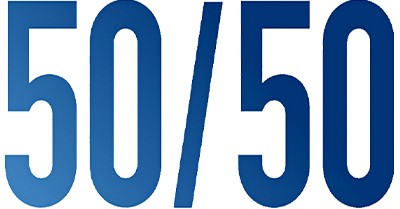A: This typically refers to opening a room or service with two educators holding Certificate III qualifications. The assumption is that the third staff member (when added) would be diploma-qualified, allowing the team to meet the 50/50 ratio requirement—which mandates that at least half of the educators must hold or be working towards a diploma-level qualification.
How It Meets The 50/50 Requirement
|
Staffing Scenario |
Cert III Educators |
Diploma Educators |
Meets 50/50 Requirement? |
|---|---|---|---|
|
Opening with 2 Certificate III |
2 |
0 |
✅ If adding a diploma |
|
Full staffing: 3 educators |
2 |
1 |
✅ Yes |
|
Full staffing: 4 educators |
2 |
2 |
✅ Yes |
If only two educators are present for any period of time and both are Certificate III qualified, that may technically be permitted for brief transitions. But for sustained ratios—especially during core hours—the 50/50 balance must be upheld either by having diploma educators on shift or ensuring one of the certs is actively working toward a diploma.
Here’s where it can get murky:
- Transitional windows (e.g. opening or closing shifts) sometimes allow brief coverage with two Cert III educators — but only if it's documented as a short-term arrangement and doesn’t undermine overall ratio integrity.
- The moment it stretches into “sustained care” — say, across the bulk of the day or during high-risk hours—having no diploma-qualified educator or someone working towards it would breach the spirit, if not the letter, of the 50/50 requirement.
- The 50/50 rule isn’t just a numbers game—it’s about ensuring a qualified, skilled presence to lead practice, guide decision-making, and meet developmental needs of children across the day.
Transitional Windows—How Long Is Too Long
This is where ambiguity creeps into the regulations, because the term “transitional” isn’t strictly time-boxed in most frameworks. That said, best practice—and what regulators typically expect—would be brief coverage periods such as
- Opening/closing shifts: usually no more than 30–60 minutes before or after core program hours.
- Staff breaks/lunches: temporary coverage while someone steps away, ideally under 30 minutes.
- Drop-off and pick-up periods: where child numbers are lower and risk is reduced, but still must be logged.
Further Reading
Actively Working Towards A Cert 3, Diploma Or ECT Qualification
Active Supervision In Early Childhood Settings
50% Of Educators Within A Service Must Be Diploma Qualified Or Higher
Educator to Child Ratios In Early Childhood Services
References:
50/50 Qualification Requirement - Under Regulation 126 of the National Regulations, at least 50% of educators counted in ratios must hold or be actively working towards a diploma-level qualification, while the remaining educators must hold or be working towards a Certificate III. This is confirmed by Aussie Childcare Network’s summary and ACECQA’s qualification guidance.
Actively Working Towards - Educators can be counted toward the 50/50 ratio if they’re actively working towards a diploma — meaning they’re enrolled, making satisfactory progress, and meeting enrolment requirements. This is detailed in ACECQA’s official fact sheet.
Transitional Coverage Windows - While there’s no strict time limit defined in regulations, transitional coverage (e.g. opening/closing shifts) is generally interpreted as brief periods — often 30–60 minutes — where full qualification balance may not be present. This is supported by best practice interpretations in sector guidance like KindiCare’s educator qualification overview and ESB SA’s factsheet on ratios and qualifications.
Ratio Integrity During Core Hours - The expectation is that sustained coverage — especially during core program hours — must reflect the 50/50 qualification balance. Services are encouraged to document staffing profiles and qualification levels hour-by-hour to demonstrate compliance.







 As an Educator in Australia, your pay rate falls under the Children’s Services Award 2010. This award states the minimum amount that an employer can
As an Educator in Australia, your pay rate falls under the Children’s Services Award 2010. This award states the minimum amount that an employer can When working as a qualified Early Childhood Teacher (with a university degree) within a service, your rate of pay will come from the Educational Services
When working as a qualified Early Childhood Teacher (with a university degree) within a service, your rate of pay will come from the Educational Services When working as a Diploma Qualified Educator your pay rate is from the Children's Services Award 2010. This Award states your minimum rate of pay
When working as a Diploma Qualified Educator your pay rate is from the Children's Services Award 2010. This Award states your minimum rate of pay When working as a Cert 3 Qualified Educator, your pay rate is from the Children's Services Award 2010. This Award states your minimum rate of
When working as a Cert 3 Qualified Educator, your pay rate is from the Children's Services Award 2010. This Award states your minimum rate of Educational Leaders play a crucial role in their early childhood service by ensuring that the educational program aligns with best practices and supports the holistic
Educational Leaders play a crucial role in their early childhood service by ensuring that the educational program aligns with best practices and supports the holistic In early childhood education and care, ratios are more than a technicality—they are a frontline safeguard. Every child deserves responsive supervision, emotional connection, and developmental
In early childhood education and care, ratios are more than a technicality—they are a frontline safeguard. Every child deserves responsive supervision, emotional connection, and developmental With the new national child safety reforms kicking in on 1 September 2025, early childhood services like yours have a real opportunity to lead the
With the new national child safety reforms kicking in on 1 September 2025, early childhood services like yours have a real opportunity to lead the Here’s a comprehensive Mobile Phone and Smart Watch Policy tailored for early childhood education and care (ECEC) services in Australia, aligned with the latest 2025
Here’s a comprehensive Mobile Phone and Smart Watch Policy tailored for early childhood education and care (ECEC) services in Australia, aligned with the latest 2025 The Sea of Fish Challenge is a national initiative that invites children, educators, families, and communities to create and display fish artworks as a symbol
The Sea of Fish Challenge is a national initiative that invites children, educators, families, and communities to create and display fish artworks as a symbol Across the early childhood education and care sector, educators are sounding the alarm: current staffing ratios are insufficient to deliver safe, meaningful, and developmentally appropriate
Across the early childhood education and care sector, educators are sounding the alarm: current staffing ratios are insufficient to deliver safe, meaningful, and developmentally appropriate


